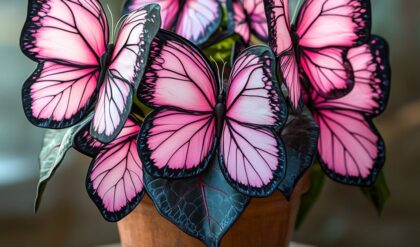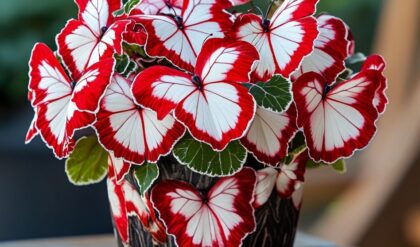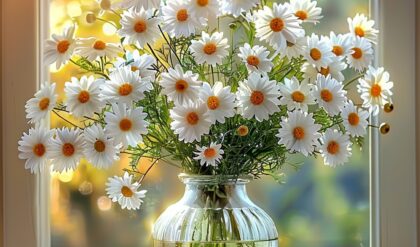Growing a Weeping Begonia can be a delightful journey through the world of gardening, as these plants are known for their stunning foliage and unique growth habits. With the right care and environment, you can cultivate a thriving weeping begonia that adds charm and color to your indoor spaces or garden. Below, we unpack the essential steps and insights necessary for nurturing this captivating plant.

Ideal Conditions
Weeping begonias thrive in specific conditions that cater to their unique needs. From light requirements to soil considerations, understanding these ideal conditions is crucial for ensuring the health and vibrant growth of your weeping begonia.
Light Requirements
Weeping begonias thrive in dappled sunlight to partial shade. They prefer environments where they can soak up morning light while being shielded from the harsher afternoon sun. This balance is crucial, especially in warmer climates, as too much direct sunlight can scorch their delicate leaves.
When growing weeping begonias indoors, place them near a bright window that receives indirect sunlight throughout the day. Avoid positioning them in direct sunlight, as this can lead to leaf discoloration and wilting. If you notice your plant stretching or becoming leggy, it’s a sign that it’s not receiving enough light, and you may need to move it to a brighter location.
In outdoor settings, select a spot that offers partial shade, such as under the canopy of a tree or on a patio with filtered sunlight. This will provide the perfect balance of light exposure to keep your weeping begonia thriving.
Soil Considerations
The choice of soil plays a vital role in the health of your weeping begonia. These plants prefer a well-draining potting mix rich in organic matter, as it supports healthy root development and prevents waterlogging, which can lead to root rot.
When selecting a potting mix, look for one specifically formulated for African violet or begonia plants. These mixes typically contain a blend of peat moss, perlite, and vermiculite, which provide the necessary drainage and moisture retention. If you prefer to create your own blend, consider mixing equal parts of peat moss, perlite, and compost or well-rotted organic matter.
It’s important to ensure that the soil is not too compact or dense, as this can restrict air flow and lead to poor root growth. Regularly assess the soil’s moisture content and adjust your watering schedule accordingly to maintain the perfect balance of moisture and drainage.
Propagation Techniques
One of the most rewarding aspects of growing weeping begonias is propagation. You can easily grow new plants from leaf or stem cuttings, allowing you to expand your collection and share these beauties with friends and family.
To propagate using a leaf clipping, simply select a healthy, mature leaf and snip it off the plant, leaving a small stem attached. Place the leaf cutting in a well-draining potting mix, ensuring the stem is buried and the leaf is resting on the soil surface. Keep the soil consistently moist, and within a few weeks, you should see new roots and growth emerging.
Alternatively, you can propagate from stem cuttings. Choose a healthy, non-flowering stem and cut it just below a leaf node. Dip the cut end in a rooting hormone, which can help stimulate root development, and then plant it in your prepared potting mix. Again, keep the soil moist, and in time, you’ll witness the emergence of new growth.
When propagating weeping begonias, it’s crucial to maintain the right environmental conditions, such as appropriate light levels and humidity, to support the cuttings as they develop into thriving plants.
Watering and Humidity Needs
Proper watering and humidity management are essential for the long-term health and vibrancy of your weeping begonia.
The Right Amount of Water
Watering is an integral part of weeping begonia care. These plants prefer consistently moist soil but dislike soggy conditions. Generally, it’s best to water when the top inch of soil feels dry to the touch.

When watering your weeping begonia, be mindful not to let the soil become completely dry, as this can lead to wilting and stress for the plant. On the other hand, overwatering can also be detrimental, causing waterlogging and potentially leading to fungal infections or root issues.
To strike the right balance, check the soil regularly and water your weeping begonia when the top inch feels dry. Adjust your watering schedule based on factors such as the plant’s growth stage, the season, and the environmental conditions. During the growing season, you may need to water more frequently, while in the winter, the watering needs will be reduced.
Humidity Levels
Weeping begonias appreciate higher humidity levels, making them perfect candidates for indoor environments, particularly in kitchens or bathrooms where moisture tends to linger.
If you’re growing your weeping begonia in a dry area, consider using a humidity tray or misting the plant regularly to create a favorable microclimate. A humidity tray can be as simple as a shallow tray filled with pebbles and water, with the pot placed on top, allowing the evaporating water to increase the surrounding humidity.
Alternatively, you can mist the leaves of your weeping begonia using a clean spray bottle filled with water. This can be particularly beneficial during the growing season when the plant is actively transpiring and requiring more moisture.
Remember that excessive moisture can also lead to issues, such as fungal growth or leaf rot, so it’s essential to strike a balance and monitor the plant’s response to the humidity levels.
Seasonal Care
Weeping begonias have distinct care requirements based on the season and the environment they are grown in, whether indoors or outdoors.
Outdoor vs. Indoor Growth
In the context of seasons, weeping begonias are hardy in USDA zones 9-11, meaning they can flourish outdoors year-round in warmer regions. However, in colder zones (2-8), it’s advisable to treat them as annuals, bringing them indoors during winter to protect them from frost.

When grown outdoors, weeping begonias thrive in partially shaded areas, where they can soak up the morning sun and be shielded from the harsher afternoon heat. In these environments, they may require more frequent watering, especially during hot, dry periods, to maintain consistently moist soil.
For gardeners in colder climates, transitioning your weeping begonia indoors during the winter months is essential. This not only safeguards the plant but also allows you to enjoy its beauty throughout the year, regardless of external weather conditions.
When bringing your weeping begonia indoors, gradually acclimate it to the new environment by gradually reducing its exposure to sunlight. Place it in a spot that receives bright, indirect light, and monitor its water needs, as indoor conditions may require less frequent watering.
Winter Care
During the winter months, weeping begonias require special care to ensure their survival and continued growth.
One of the primary concerns is maintaining the appropriate light levels. As mentioned earlier, these plants prefer bright, indirect light, and they may need supplemental lighting if placed in a location with limited natural light. Consider using a grow light or placing the plant near a south-facing window to ensure it receives the necessary illumination.
Watering needs will also decrease during the winter, as the plant’s growth slows down. Avoid overwatering, as this can lead to root rot and other issues. Instead, wait for the top inch of soil to dry out before watering, and be mindful of the plant’s response to the reduced light and cooler temperatures.
Additionally, it’s important to protect your weeping begonia from sudden temperature fluctuations, drafts, and dry air, which can stress the plant. Maintain a consistent temperature, ideally between 65-75°F (18-24°C), and consider using a pebble tray or misting the leaves to increase humidity levels.
By carefully managing the winter conditions and providing your weeping begonia with the necessary care, you can ensure its survival and transition it back outdoors in the spring, ready to thrive and bring joy to your garden or indoor space.
Potential Challenges
Like any plant, weeping begonias can face various challenges, from pest infestations to environmental stressors. Understanding these potential issues and implementing proactive measures can help you maintain the health and beauty of your weeping begonia.
Pest Management
Weeping begonias can be susceptible to pests, including aphids and spider mites. These small, sap-sucking insects can cause discoloration, stunted growth, and even the death of your plant if left unchecked.
Regularly inspecting your weeping begonia for signs of pests, such as webbing or discolored, wilting leaves, is crucial. If you do encounter an infestation, consider introducing beneficial insects, such as ladybugs or lacewings, which feed on the pests. You can also use a gentle, insecticidal soap or neem oil solution to target the affected areas, taking care to follow the manufacturer’s instructions and avoid harming the plant.
Maintaining proper growing conditions, such as adequate air circulation and proper watering, can also help deter pests and keep your weeping begonia thriving.
Disease Prevention
While weeping begonias are generally disease-resistant, they can still be susceptible to fungal infections, particularly if they are grown in overly wet or stagnant conditions.
One common issue is root rot, which can occur due to overwatering or poor drainage. To prevent this, ensure your potting mix is well-draining, and avoid allowing the soil to become waterlogged. If you suspect root rot, carefully inspect the roots and trim away any affected areas before repotting the plant in fresh, well-draining soil.
Another potential concern is powdery mildew, which appears as a white, powdery coating on the leaves. This fungal disease thrives in humid, stagnant environments. To prevent and manage powdery mildew, maintain good air circulation around your weeping begonia, and consider using a fungicide specifically formulated for ornamental plants.
By staying vigilant, addressing any issues promptly, and providing your weeping begonia with the optimal growing conditions, you can minimize the risk of disease and maintain the plant’s health and vigor.
Conclusion
Embracing the cultivation of weeping begonias is akin to nurturing a relationship; attention, patience, and an understanding of their needs will yield beautiful blooms and vibrant foliage. Whether you decide to display them indoors or in your garden, these plants can bring joy and tranquility to your surroundings.
By following the guidelines outlined in this comprehensive guide, you’ll be well on your way to cultivating a thriving weeping begonia that will captivate and delight you for years to come. Embrace the journey, celebrate the small victories, and enjoy the beauty that these unique and enchanting plants have to offer.


